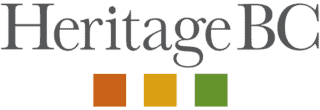- Heritage 101
- Advocacy
- Accessibility for Historic Places
- Climate & Sustainability
- Cultural Maps
- Heritage Place Conservation
- Heritage Policy & Legislation
- Homeowners
- Intangible Cultural Heritage
- Reconciliation
- Indigenous Cultural Heritage
- Setting the Bar: A Reconciliation Guide for Heritage
- 1. Heritage and Reconciliation Pledge
- 2. Acknowledging Land and People
- 3. Celebrating Days of Recognition and Commemoration
- 4. With a Commitment to Learn
- 5. Committing to Strategic Organizational Diversity
- 6. Mission-Making Room for Reconciliation
- 7. Possession, Interpretation, Repatriation and Cultural Care
- 8. Shared Decision Making
- 9. Statements of Significance and other heritage planning documents
- 10. Heritage Conservation Tools, Local Government Act
- Racism: Do Not Let the Forgetting Prevail
- Taking Action: resources for diversity and inclusion
- Webinars On-Demand
Approaching ICH Practice
What is your advice to someone who wants to help preserve intangible cultural heritage and to truly honor and respect the people in origins of that heritage?
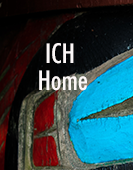 |
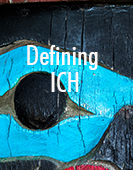 |
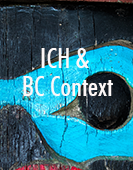 |
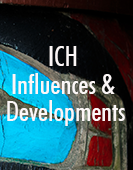 |
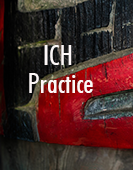 |
 |
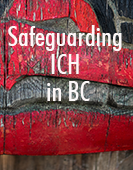 |
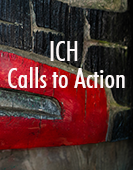 |
Agnieszka
I’m a non-indigenous academic working in an institution and in the department of First Nations/Indigenous Studies. And this question is obviously personal, and it addresses me on a professional level. I can try to answer it by referring to my experiences only.
What I’ve learned – and this is the advice I would have to individuals – don’t assume you know. I’ve learned that as well. We bring what we know – our assumptions – into any community that we work in but they don’t always apply. We can’t assume that there is a strong sense of language retention, or interest in transmitting or promoting heritage, especially among young people.
We can’t assume that people know their heritage.
For example, I had one Indigenous Elder from the United States come into my classroom and say, “we have these people trying to work with us, to work on our knowledge. But it’s embarrassing to say that we don’t know anything… that we’ve lost a lot of that.” Those words were very powerful.
To assume that people have ‘cultural/traditional’ knowledge is one of the assumptions that we bring into work with communities. I would say therefore, assume that you don’t know, especially when you come into the community to do community-based cultural work.
I know the word ‘relationship’ seems to be overused and sometimes it doesn’t mean what it should mean, but in my experience, establishing relationships and friendships, meaning, and looking at people as people is important.
It is the realization that you’re both growing as individuals and bringing things together into a relationship; that is one way to determine what specific cultural elements are valued. For me, it is from those relationships that my work in intangible cultural heritage safeguarding grew. For example, I was never engaged in language revitalization, and I don’t speak Dakelh ghuni (Carrier language). I began doing work in this area because, well, life happened: a Dakelh elder wanted help in this area of work and I had children. So, what happened is that we looked at books that we aspired to develop by ‘testing’ them out on my children: what kind of books they liked, what element of books did they have little interest in. This was helpful in starting work producing books for children in the Carrier language, and hence in language revitalization.
So, while there are limitations when you are not of that culture, everyone has heritage they want to preserve.
I also have a heritage that I’m interested in safeguarding, heritage that I’m proud of. Working with Indigenous people and safeguarding ICH has actually created fantastic relationships opportunities for knowledge exchange and for getting ideas and projects together that both of us can work on.
As mentioned, language revitalization and building avenues for linguistic retention was a strong common denominator because we could exchange ideas on what works and what doesn’t from our own personal lives. I like to think that there are opportunities to learn from anybody.
Certainly, there are cases of appropriation, erasure, and ‘speaking for’ the group that still occur today. That is why building relationships and friendships is a good start –and it limits any unethical behaviours. I am friends with the people I work with and when we chat, it’s about our lives. And it’s in those conversations that we learn about what we value and how we can safeguard those values as well as what opportunities can be made for us to work together to preserve what is important to us.
Cultural heritage is not exclusive to one group but when it comes to community-based work with a group that is not your own, cultural heritage work (not efforts to sustain it) is often something that we do on the side of our daily life.
Again, an element of cultural heritage is not exclusive to one group. For example, blueberry picking is not exclusive to a culture but rather a tradition that many have. Blueberry picking has been recognized as an intangible cultural heritage in Newfoundland. Fishing and mushroom picking are also activities that are hard to define as exclusive to one group in Canada. To get back to the question at hand, I think there are opportunities to learn from each other’s ways of protecting, safeguarding, and promoting heritage. But in order to work with communities about something that’s very important like heritage, especially those sacred elements of culture and knowledge, then relationships have to exist.
Katharine
I am an Indigenous person whose family experienced a break transmission of culture and language. And so, when I talk about transmission of intangible cultural heritage, I think something that people need to acknowledge – and it’s happening more and more and the TRC is there to help us with that – is that there has been a cut in the normal means of transmission, and that was because of residential schools and adoptions and many other reasons that really, people had no control over. So, I think, acknowledging that background and that pain and, as Agnieszka very eloquently described, the potential embarrassment.
It’s important to approach the work and the people with humility and acknowledging that you might not actually know what you’re talking about.
George
Most people want to do the right thing in terms of respecting other people’s heritage. But it’s difficult to know what that right thing is. Sometimes, people are interested in Indonesian heritage or Navajo heritage or whatever it may be, and so collect objects and tapestries that include designs from that particular culture. What they may not realize is that products they purchase to celebrate those cultures may not have been produced by them. Oftentimes, whoever manufactured those items never had permission from the heritage holders to manufacture and sell in different media.
It’s difficult to know what the right this is.
One example that shows how complicated this is concerns Inuit inukshuk (arrangements of rocks that sometimes have a quasi-human form). In 2010, the Winter Olympics Organizing Committee adopted a stylized version of these standing stone figures from the Arctic, as the official symbol of the games. This was problematic for two reasons.
First, while the Inuit Heritage Trust gave permission to the organizing committee to use the inukshuk in this way, not all Inuit agreed with that decision. Second, inukshuk have absolutely nothing to do with British Columbia, where the Winter Olympics were being held. One outcome of this use is that you can walk into any gift store in the Vancouver airport or elsewhere in British Columbia and find dozens of inukshuk-themed products for sale. Not only do the Inuit not benefit from these sales, but what was once a cultural item unique to their culture has become a generic symbol for Canada.
This is just one of hundreds of examples of cultural appropriation and commodification that I could share. On the IPinCH project website we ran a blog series called “Appropriation (?) of the Month” in which team members would explore particular instances of cultural appropriation. The question mark was important because in some cases what seemed at first to be an appropriation might not be when you dug deeper.
This comes back to my starting point of how do you know what’s the right thing to do? Again, returning to the IPinCH project, in response to frequent requests for assistance in matters concerning cultural appropriation we developed Think Before You Appropriate: A Guide for Creators and Developers (here). This practical advice to product developers and others to help them identify what is and is not appropriation, as well as what the benefits of collaborating with the heritage holders, as well as what are the consequences of not doing so.
This has taken off worldwide, and has been adopted by writers, artists, musicians and many others who admire or are inspired by Indigenous heritage but want to be respectful of it. We’ve now published a version in Japanese.
All of us can also be more thoughtful consumers when it comes to Indigenous-themed products by asking such questions as: Who made this product? Is the artist or source community identified? Do they receive any benefits?
Agnieszka
I agree that there is a lot of irony in having the Inukshuk from the Arctic be a symbol of Vancouver. In one of my classes, we look at imagery of ‘the Indigenous’ and a lot of students enjoy looking at examples in the media that are promoted as ‘symbols of Canada’. In downtown Toronto, one can still obtain a postcard of bare-chested ‘Indians of Canada’ sitting on horses. Those symbolic images continue to represent Canada to outsiders.
But, I also wanted to follow up on Katharine’s point about the TRC and the break in cultural transmission. This is what interests me: how do you come back, revive cultural heritage? This is an important question because traditionally cultural heritage was normally passed, or transmitted, through the home. It had this natural kind of non-formal but still formalized structure. This method of transmitting meant that an apprentice was taken on to be a carver, or a helper was taken on to trap with the head trapper.
This form of transmission for Indigenous people was broken because of colonial policies like residential schools and the 60s scoop. When we discuss a break in transmission and revitalization, we have to find a balance between formal institutions that are doing the work of bringing back cultural heritages, and community members who are doing this in a non-formal way.
How do we balance transmitting cultural heritage through formal education and informal education when considering that people may no longer have the tools or skills to pass elements of heritage down to future generations?
